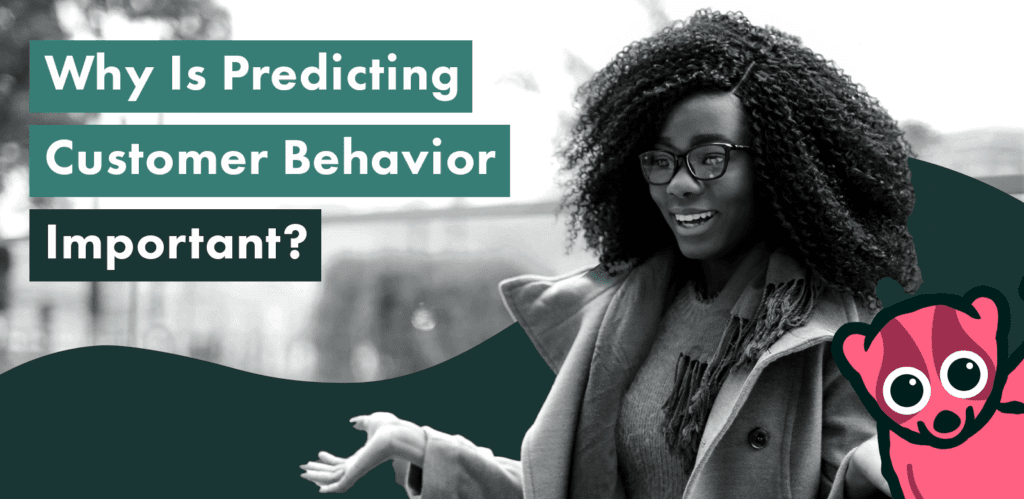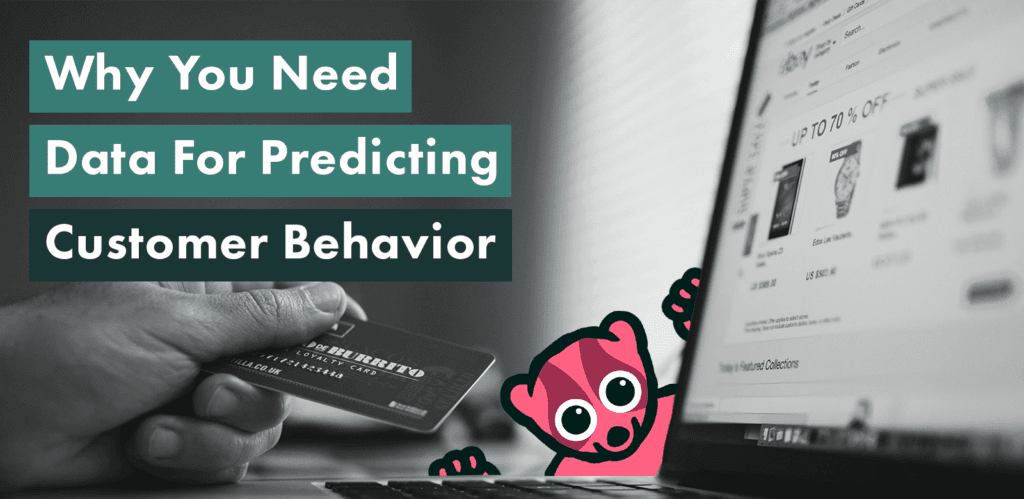
More than 85% of consumers will leave a brand they previously trusted after two bad experiences. If you can predict customer behavior, you can provide customers with an excellent experience and prevent this from happening.
Being able to predict consumer behavior means you can continuously improve your business and product to drive customer satisfaction, loyalty, and retention. These factors are crucial if you want to grow your business and boost your revenue.
So, how do you predict customer behavior? With the right data.
But to see the bigger picture, you need all the data from every customer interaction and across every channel within your contact center.
With the right data, you can:
✔️ Spot emerging issues.
✔️ Identify patterns and trends.
✔️ Stop minor issues from becoming larger problems for your business.
In this article, we’ll unpack what customer behavior is and why predicting it is important for your business. We’ll also explain how to predict customer behavior and what you can do once you have these insights.
How Data Impacts Customer Behavior Prediction
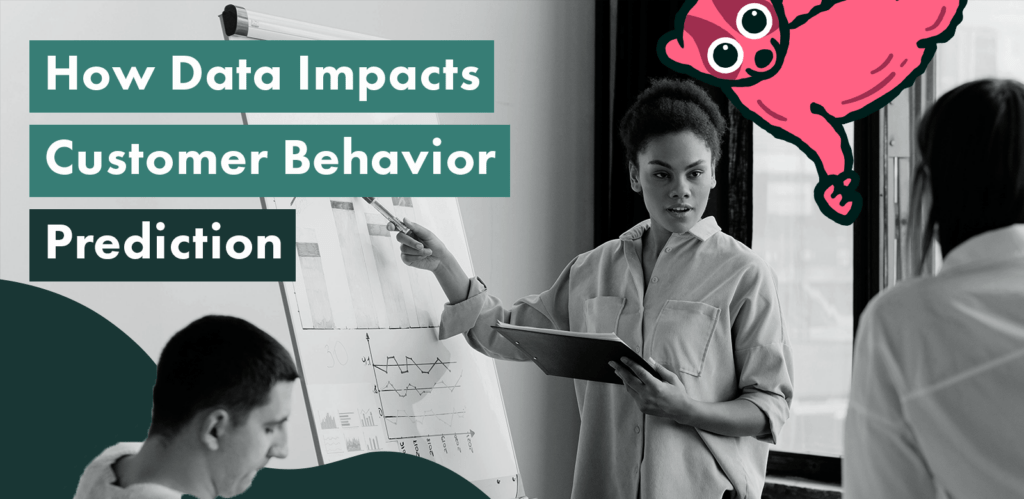
🤔 What Is Customer Behavior?
Customer behavior is understanding how people take action and make decisions when consuming products and services. Predicting customer behavior helps businesses anticipate the trends and patterns that emerge when consumers interact with your brand and make purchasing decisions. This can be used to predict their future purchasing behavior and remediate issues before they cause major problems.
Data is at the heart of consumer behavior prediction, as this will indicate customer:
- Preferences.
- Pain points.
- Needs.
- Desires.
You can use the insights derived from data to deliver the best possible product, customer support, and experience.
You can use AI to sort through large amounts of data, like that derived from your contact center, to gain actionable insights into how your customers behave. AI is great at spotting patterns and trends that humans wouldn’t be able to manually.
Predictive analytics is a part of AI that can help you understand your customers better. In fact, 44% of businesses use predictive analytics to understand their customers—you can’t miss out on this!
💡 What Is Predictive Analytics?
Predictive analytics is a technique that uses historical data, algorithms, and machine learning to identify future outcomes based on past behavior.
By analyzing patterns and trends in data, predictive analytics helps you make predictions about future events, such as customer actions and market trends.
If you can predict customer behavior, you can improve your customer service, but this isn’t the only thing that impacts the customer experience. Predicting customer behavior can be used to align your product, features, marketing, and policies with what customers want.
One study found that predictive analysis can help subscription-based companies predict customer churn, which is when customers leave your business. The research suggests that businesses should use predictive analytics proactively to identify customers at risk of leaving a brand and implement retention strategies, such as offering discounts on renewals.
In addition to using AI-powered conversation intelligence platforms, customer behavior data can also be gathered from research methodologies such as:
- Surveys.
- Interviews.
- Focus groups.
The feedback you get from these methodologies will also help you predict future customer behavior, meaning you can align your business with your customers’ future needs.
📹 How Netflix Predicts Customer Behavior
An example of a business that has used customer behavior prediction to its advantage is Netflix. The brand uses data analytics and machine learning (ML) to predict customer behavior and preferences based on what they have watched in the past.
By analyzing these viewing habits, search history, and interactions with their platform, Netflix is able to tailor content recommendations and create a personalized experience for each user.
Let’s say you’ve been watching a lot of comedy on Netflix. The platform will assume you want to watch more of this content in the future based on your behavior and will recommend more comedic content.
Almost 70% of customers expect a personalized experience from brands, which is why Netflix’s approach works so well.
Why Is Predicting Customer Behavior Important?
Predicting customer behavior is crucial for businesses for several reasons:
✅ Improved customer experience
Around 67% of customers say that a terrible customer experience is the reason why they switched to a competitor. Predicting customer behavior can help you retain customers.
By predicting and anticipating the issues that customers may contact your support team about, you can be proactive in providing support to customers at the moment they need it most.
If customers regularly contact you during the software setup phase, you can develop a series of onboarding videos for them to watch, answering common questions. This can improve the overall customer experience.
✅ Better product development
If you can predict how customers will behave regarding your product, you can develop one that performs well. You can create features and services that they need and will continue to need.
For example, let’s say you develop and provide project management software. When analyzing your customer behavior, you see that whenever you release an update, the majority of customer complaints are from those using a Mac.
This indicates you should spend more time testing updates and fixing bugs before rolling out the macOS version of your updates.
In this way, you’re predicting what could be an issue and addressing it before it becomes one.
✅ Gaining a competitive advantage
You can gain a competitive edge if you can effectively predict and respond to customer behavior. By leveraging data-driven insights, you can meet customer needs, adapt to market changes, and stay ahead of your competitors.
You can also parse out mentions of competitors and their products in customer service conversations. This gives you insight into everything from competitive marketing campaigns to key product differences to technical issues driving their customers to you.
✅ Effective risk management
Understanding customer behavior can help you identify and mitigate risks that could be a disaster for your business.
For example, if you’re a financial institution, you don’t want to lend money to clients who won’t realistically be able to pay you back.
You can use predictive analysis to assess your customers’ credit risk and determine if their past behavior means they’ll be able to repay their debts. This helps you protect your business against the risk of not getting your money back.
Like what you’re reading? Get the latest news and product updates delivered to you in our newsletter.
How to Predict Customer Behavior
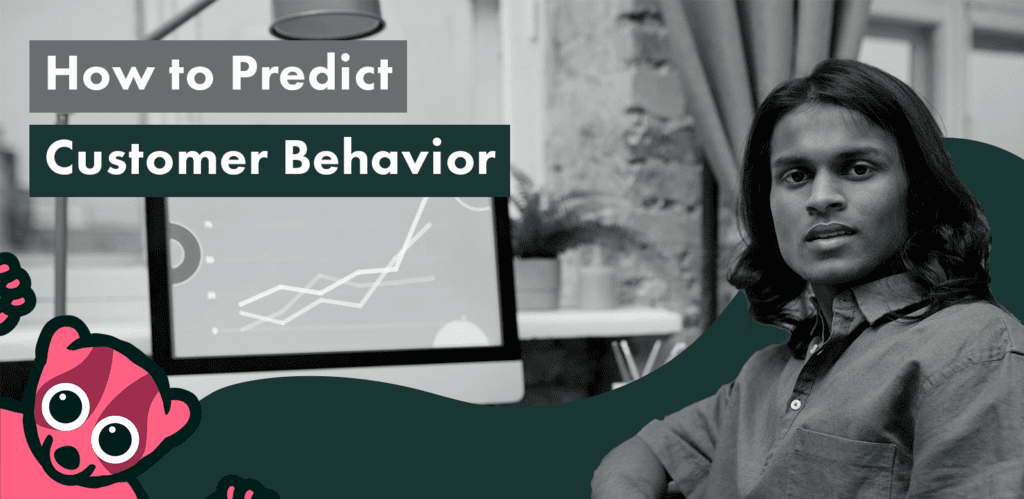
Now that you know why predicting customer behavior is important, let’s unpack how to do it:
1. Segment your customers
Customer segmentation makes businesses 60% more likely to understand their customers’ challenges and 130% more likely to know how they behave.
Segmenting your customers means dividing them up into specific groups based on what you know about them, such as their preferences, behaviors, and motivations.
You can use customer data from a conversation intelligence platform to identify these traits and group customers based on them.
You can also create detailed customer profiles for each segment to understand their needs and cater directly to them.
Certain factors influence customer behavior, and you can segment your customers according to these:
👨👩👧👦 Demographics: This includes age, gender, occupation, income, and education. These factors deeply impact customers’ purchasing decisions, as something like their income may impact their spending habits and preferences.
👨👩👧👦 Psychographics: These factors include a customer’s personality, values, interests, and lifestyle, which are important in determining their preferred customer experience.
👨👩👧👦 Social factors: This includes the views and actions of family, friends, social media, and society. These factors can shape how customers make decisions about purchases.
👨👩👧👦 Cultural factors: These involve language, values, norms, and traditions that influence customer behavior. Individuals from different cultural backgrounds may behave differently from one another.
👨👩👧👦 Economic factors: Individual income, overall economic health, inflation, and taxation all influence spending habits and product preferences.
2. Use market insights
Nearly 80% of businesses use market insights to understand customer behavior.
Market insights can help you identify the external factors that may influence a customer’s decision-making process.
For example, if the economy you operate in is experiencing growth, customers may be more willing to spend money on non-essential items. On the other hand, a recession would focus demand on more basic products.
3. Turn your data into insights
As mentioned earlier, you need all the data from your contact center to derive meaningful insights about customer behavior.
Often, the individual tools you’re using will have some element of this, but it’s important to aggregate this data to have the complete picture of customer activity.
Additionally, having a single view of insights from all your emails, calls, chats, and self-service bots will help you prioritize the top common issues across your customer experience.
Let’s say you run an eCommerce store that holds huge Black Friday sales. Last Black Friday, your website crashed due to the amount of traffic you received as a result of your discounts. Your data analysis shows that you received a large number of complaints via email, live chat, and calls about your website being down.
This data can help you predict future customer behavior. You now know that a significant amount of customers are going to visit your online store on Black Fridays, so you can take measures to improve their experience by ensuring your website won’t crash. This way, you can retain customers and ensure you don’t lose out on sales.
4 Types of Customer Behavior
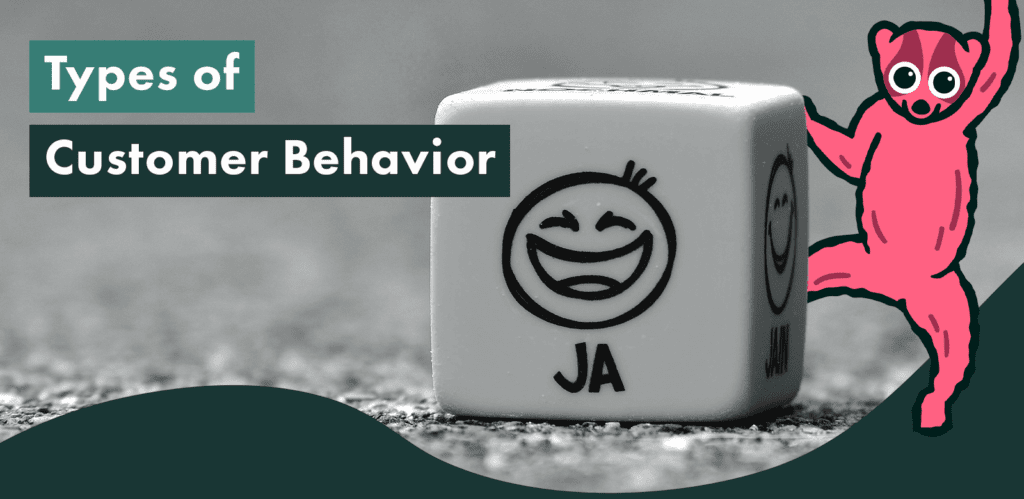
There are four main types of customer behavior that are useful to understand:
➡️ Complex buying behavior
This occurs when customers put a lot of time and effort into researching products before making a purchase. In fact, 81% of shoppers will conduct in-depth research before purchasing—especially on large purchases.
One study found that when it comes to eCommerce businesses specifically, customers spend significant time reading information about products before making important purchases. Important purchases could be items such as cars and expensive electronics.
You can leverage your understanding of this behavior by providing detailed product information, guides, and resources to nudge your customers toward making a purchase.
You can also use the common questions you get from customers to address pre-purchase concerns proactively.
➡️ Dissonance-reducing buying behavior
This behavior occurs when customers experience post-purchase uncertainty about their decision to buy something. It can happen when customers feel like they’ve made an uninformed purchasing decision too quickly.
A good thing to do here is to reassure customers that they’ve made the right decision by showcasing positive customer reviews and offering clear return and exchange policies.
Almost 60% of consumers will use multiple channels to get their questions answered. For this reason, you can reduce post-purchase anxiety by providing multiple channels for customers to contact you.
➡️ Habitual buying behavior
This type of behavior is characterized by customers relying on habits and routines when making their purchasing decisions. This behavior is often found in product categories like groceries or personal care items where customers aren’t going to do much research on the products they buy.
To leverage habitual buying behavior, you can ensure you use consistent branding and packaging, implement loyalty programs, and offer regular discounts.
For subscription-based businesses, being clear about things like purchase frequency and cancellation fees can address many customer inquiries—especially for newer customers.
➡️ Variety-seeking buyer behavior
This is when customers actively seek new products, experiences, and brands, even if they are happy with their current products. This type of behavior gives you the opportunity to win new business from your competitors.
This behavior typically occurs when customers face little risk when trying out new options and low-cost products.
You can leverage this type of behavior by launching seasonal or limited-time products and running promotional offers.
What You Can Do with Customer Behavior Insights
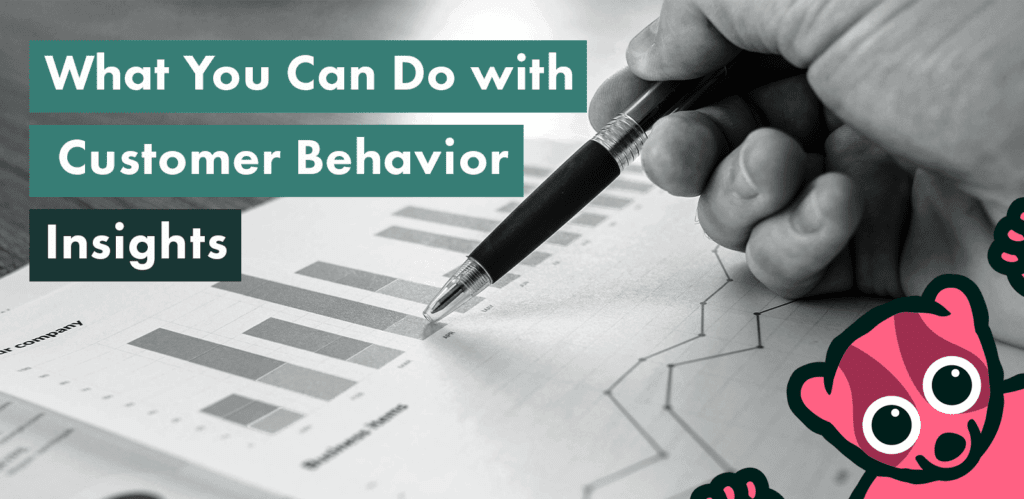
Once you’ve collected insights on customer behavior, there are several things you can do:
🔎 Identify emerging issues
Thanks to AI-powered conversation intelligence platforms like Loris, you can now spot issues before they turn into costly problems for your business.
By analyzing all your customer interactions, Loris will quickly identify small, emerging problems that customers may just be starting to contact you about. With these insights, you can address these minor issues before they become major crises.
Even if you only have a handful of customers complaining about something, conversation intelligence gives you the opportunity to fix the issue right away to ensure you don’t lose any customers.
👀 Spot root causes
Conversation intelligence helps you determine the root cause of a problem that customers may be contacting you about.
Let’s say you run a contact center for a bank, and customers contact you because they want to change the co-owner on their bank account.
The root cause here isn’t that the customer has a problem changing the co-owner of the account. The root cause is that customers can’t change the co-owner on their account themselves.
Rather, they have to reach out to a contact center agent to have this done for them. To act on this insight, you could create a self-service option available to change the co-owner of an account. In fact, over 66% of customers prefer self-service over speaking to a contact center agent.
💡 A Word From Our Experts:
“Many customer service tools tell you what a customer is trying to do when they contact your support team. These tools don’t tell you what’s wrong with the customer journey in order for a customer to come to you with a problem in the first place. Loris identifies the root cause of why people are coming to you with their problems, such as not being able to self-serve. ” — Christina Drum, Head of CX at Loris
👉 Personalize marketing campaigns
Over 80% of customers prefer brands that offer them personalized marketing. By predicting customer behaviors, you can provide your customers with personalized marketing campaigns that directly address their specific pain points, making your marketing efforts more effective.
📊 Use predictive behavior modeling
Predictive behavior modeling is a key component of predictive analytics. It uses a mathematical process to predict future events or outcomes by analyzing patterns within datasets.
You can use predictive behavior modeling to forecast the future behaviors of your customers. By looking at past data, you can identify patterns and predict things like why customers contact you in the first place and how you can ensure they don’t have to.
Additionally, if you can predict what customers will contact you about, you can better prepare your agents to deal with these complaints and inquiries. While avoiding the issue altogether is ideal, having a quick response to problems can still increase customer satisfaction after interaction with the support team.
Let’s go back to our software update scenario. Your agents should be trained and coached on how to deal with Mac-related complaints and issues to resolve these as quickly as possible, including things like troubleshooting guides and detailed steps on resolution.
Get the Right Predictive Data with an AI-Powered Platform
Loris is an AI-powered conversation intelligence platform that analyzes every single customer interaction in your contact center across all your channels.
Before innovative platforms like Loris, contact center managers and quality assurance (QA) analysts either had to manually sift through endless transcripts and data to try to find insights themselves or relied on tools that provided only a sample of customer interactions.
Now, Loris gives you all the insights you need to predict customer behavior so that you can provide them with the best experience and customer service.
You get actionable insights that help you make accurate predictions about customer behavior and what you can do to improve your product, policies, and customer service.
Loris also helps you identify emerging issues and root causes so that you can deliver a product and experience that retains customers and drives loyalty. Speak to an expert today and learn more about how Loris can help you predict customer behavior.
